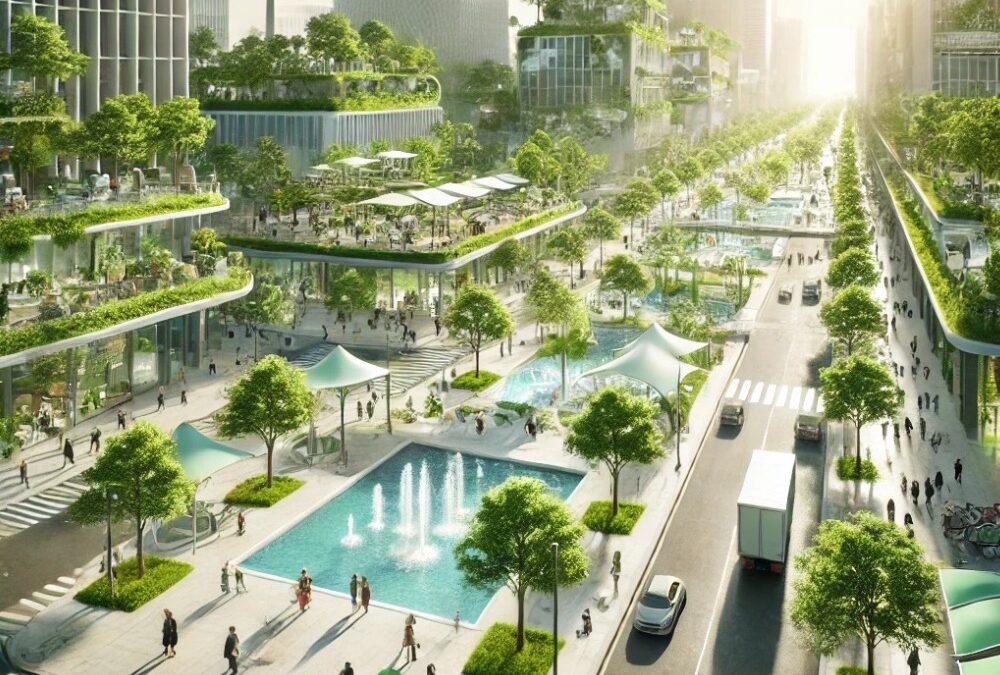We believe in 2050, cities worldwide have recognised that sealed surfaces are one of the biggest challenges for climate adaptation. Although the decline in private car traffic has led to less road traffic, the remaining road surfaces are still a dominant factor in urban sealing. The road has therefore been redefined as a key lever for sustainable water management and climate adaptation.
The streets of 2050 are no longer just traffic routes, but multifunctional infrastructures that efficiently manage rainwater, reduce urban overheating and at the same time enrich the urban living space.
With regard to the matter of water absorption and storage, we would like to propose the following:
- Road surfaces are fully permeable and are designed to filter rainwater through integrated layers of bioactive materials. While there is still a need to address pollutants such as microplastics, oil and heavy metals, the road surface is an effective initial step in this process.
- Underground storage reservoirs collect excess water, which could potentially be used for a variety of purposes, including irrigation and urban cooling.
- One further benefit of this approach is that it can help to cool the urban climate.
Thanks to lower traffic volumes due to less private transport and the reduction of traffic routes thanks to smart traffic control, streets can be interspersed with green islands that are irrigated by the stored water and have the potential to lower the ambient temperature through evaporative cooling.
We would like to propose the concept of sustainable mobility. The remaining lanes have been designed with the aim of optimising conditions for zero-emission vehicles, public transport and logistics services. Pedestrians and cyclists will have access to green corridors that are cooled by shady vegetation and water mist.


Recent Comments